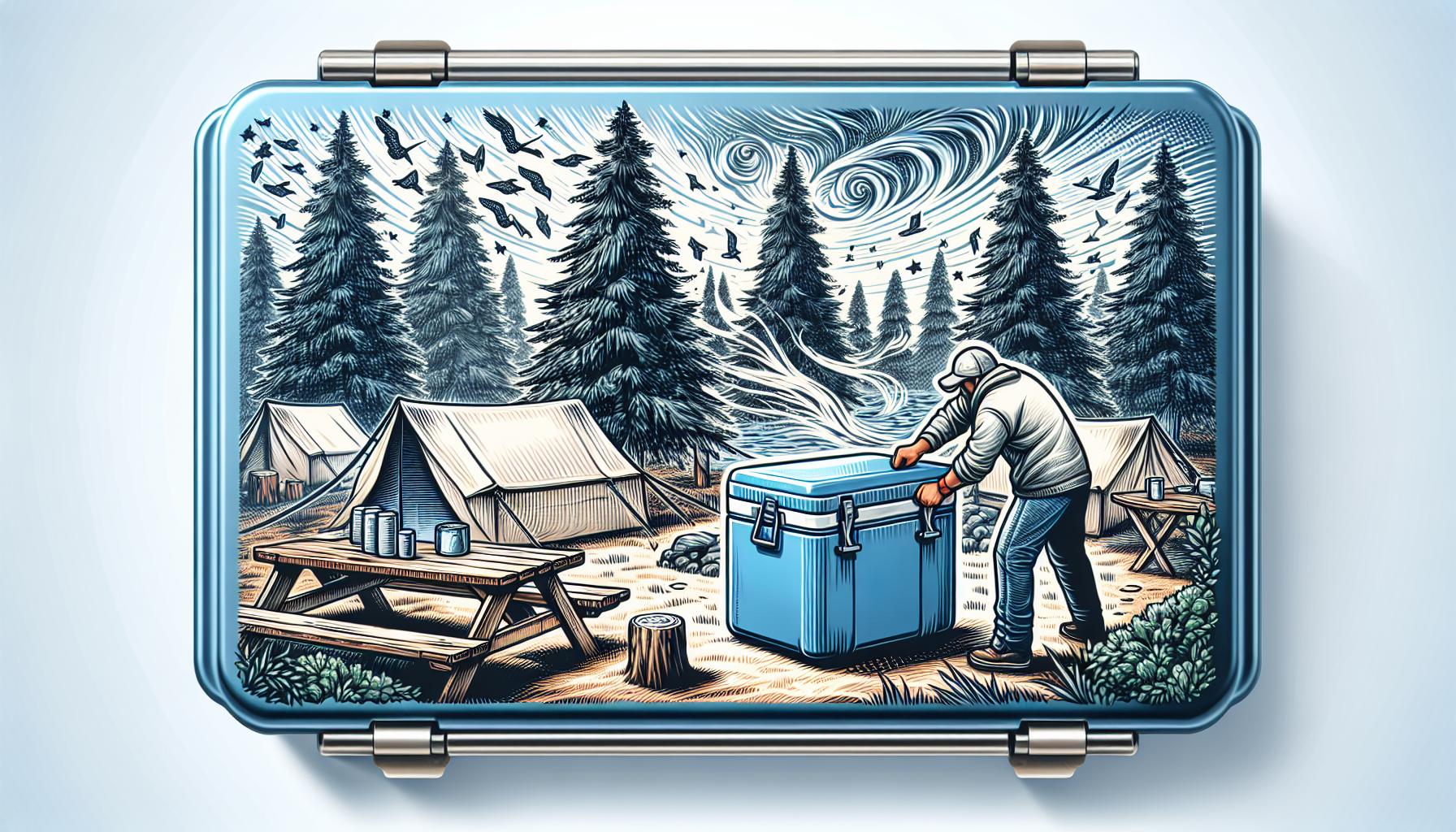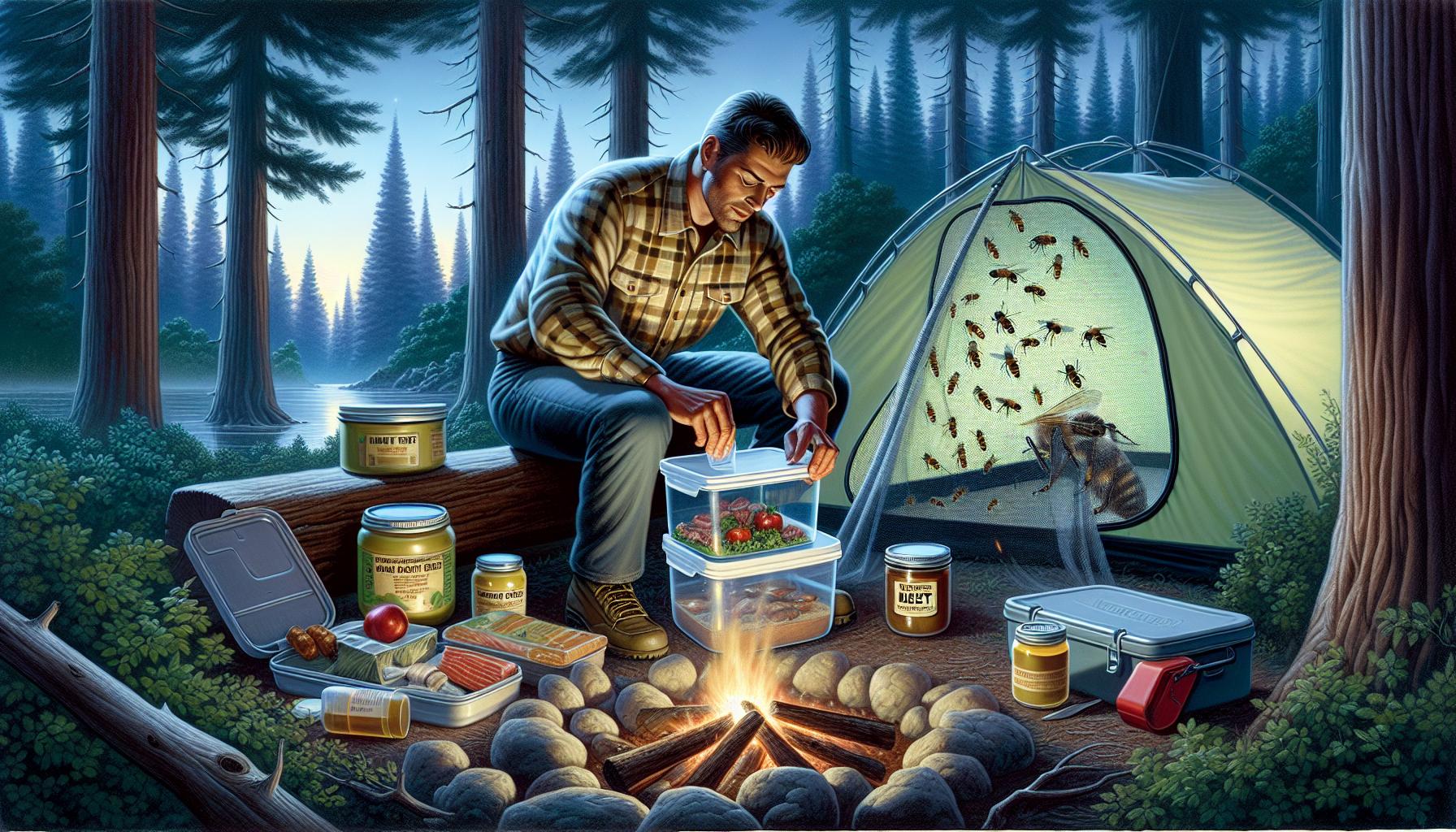Camping offers a serene escape into nature, but nothing ruins a peaceful meal like the sudden invasion of meat bees. These aggressive insects, also known as yellow jackets, are attracted to the scent of food and can turn a pleasant outing into a stressful experience. I’ve faced these unwelcome guests more than once, and I’ve learned some effective strategies to keep them at bay.
Understanding how to deter meat bees can make all the difference in your camping adventure. From choosing the right campsite to using natural repellents, there are several steps you can take to enjoy your outdoor meals without the constant buzz of these pesky intruders. Let’s dive into some practical tips to ensure your next camping trip remains bee-free and enjoyable.
Understanding Meat Bees
Characteristics of Meat Bees
Meat bees, commonly known as yellow jackets, are aggressive and can sting multiple times without dying. These insects belong to the wasp family and differ significantly from honeybees. Unlike honeybees, meat bees don’t produce honey, and their primary diet consists of proteins like meat and insects. They have a distinctive yellow and black coloration and can become highly defensive if their nest is threatened. Meat bees often build nests in the ground, but sometimes they use wall cavities or attics.
Why Meat Bees Are Attracted to Campsites
Meat bees are drawn to campsites because of the abundance of food sources. They are particularly attracted to meats, sugary foods, and garbage. When cooking or eating outdoors, the scent of food can attract them from a considerable distance. Additionally, open soda cans, juice bottles, and even food scraps can lure them into your camping area. Warm weather intensifies their activity, making campsites prime targets during summer and early fall. Proper food storage and waste management are crucial in keeping these pesky insects at bay.
Effective Strategies to Keep Meat Bees Away

Choosing the Right Campsite
Selecting an appropriate campsite is crucial for avoiding meat bees. It’s essential to avoid areas near trash bins, as these often attract insects looking for food scraps. Checking for visible nests nearby is important since meat bees can become aggressive if disturbed. Opting for a windy or elevated spot can also help, as meat bees are less active in windy conditions. Ensuring the site is clean and well-maintained minimizes the chances of encountering these pests.
Proper Food Storage and Handling
Proper food storage and handling significantly reduce the attraction of meat bees. Keeping all food items in sealed containers limits scents that draw these insects. Storing food in coolers or covered bins minimizes exposure, especially items like meats and sweets which are highly attractive to meat bees. Cleaning up promptly after meals is critical, as lingering food scraps or spills can invite these wasps. Using scented trash bags and disposing of waste properly ensure that garbage doesn’t become a beacon for meat bees.
Using Repellents and Traps

Natural Repellents for Meat Bees
Essential oils can be effective natural repellents for meat bees. Oils like peppermint, clove, and eucalyptus, known for their strong scents, deter yellow jackets when applied around campsites. I typically mix a few drops with water in a spray bottle to treat tent entrances and dining areas. Another natural deterrent is cucumber peels; placing them around the eating area helps keep these pests at bay. Additionally, when citronella candles are placed around the perimeter, they create a scent barrier that helps reduce bee activity.
Commercial Traps and Their Effectiveness
Commercial traps designed for yellow jackets are another excellent strategy. I prefer traps that use bait to lure meat bees inside, preventing escape. These traps can be hung around the campsite, especially near areas where food is prepared or consumed. Experiments with different bait solutions confirm that fish and meat residues often work best. Deploying several traps increases effectiveness by covering more territory, essential for larger campsites. Ensure traps are checked and maintained daily to prevent accumulation and enhance their efficacy.
Behavioral Techniques to Deter Meat Bees

Minimizing Attraction Points
Reducing potential attractants can significantly lower the presence of meat bees. One key step is keeping all food securely stored in sealed containers. Open-air meals attract bees, so I prefer eating inside a mesh food tent or equipped picnic shelter. Clean up spills immediately and avoid leaving sugary drinks uncovered. Set up eating areas away from the main campsite if possible. Consuming sweet snacks, like fruits, should happen away from the campsite, with remains disposed of immediately.
Ensure exposed skin is clean from food residues, as meat bees are drawn to scents. Additionally, avoid using scented lotions and perfumes which attract bees. Wearing light-colored clothing—long sleeves and pants—is less likely to entice meat bees than darker colors. Diverting them from the main area, consider setting up a decoy snack station with non-harmful bait distant from your living quarters.
Managing Garbage and Leftovers
Garbage management is crucial to deterring meat bees. I segregate trash immediately, using heavy-duty, sealed bags or containers with tight lids. Collect and remove garbage daily or more often if necessary. Dispose of food scraps carefully and avoid leaving leftovers out in the open. Cleaning dishes and utensils right after use prevents lingering food smells that attract meat bees.
Use designated animal-proof trash containers if available; if not, keep personal trash bags inside your vehicle until they can be properly disposed of. Avoid burning food waste in the campfire, as this can attract bees and other wildlife. Allocate a specific area for waste disposal well away from sleeping and eating zones to reduce attraction further. Always aim for a campsite clean-up just before nightfall to ensure all attractants are minimized before resting.
Conclusion
Camping should be a peaceful escape, not a battle with meat bees. By implementing these strategies, you can significantly reduce the likelihood of these pests ruining your trip. From choosing the right campsite to using natural repellents and traps, every step counts. Proper food storage and waste management are crucial, as is being mindful of your behavior and clothing. By taking these precautions, you’ll create a more enjoyable and bee-free camping experience. Stay vigilant and prepared, and you’ll be able to focus on the beauty of nature rather than swatting away unwelcome guests.
Frequently Asked Questions
What are meat bees, and why are they a nuisance during camping trips?
Meat bees, also known as yellow jackets, are a type of predatory wasp attracted to meat and sugary foods. They can be a nuisance during camping trips as they are aggressive and can sting multiple times, making outdoor activities less enjoyable.
Why is proper food storage important for keeping meat bees away?
Proper food storage prevents meat bees from being attracted to your campsite. Storing food in sealed containers and coolers, and promptly cleaning up spills and crumbs, are crucial steps to deter these pests.
How can I choose the right campsite to avoid meat bees?
Select a campsite away from known nests and areas with high yellow jacket activity. Avoid campsites near open trash bins and areas with fallen fruits or other food sources attractive to yellow jackets.
What natural repellents can be used to deter meat bees?
Essential oils such as peppermint, eucalyptus, and citronella can serve as natural repellents. Additionally, cucumber peels are known to deter meat bees due to their bitter taste.
How do commercial traps work to control meat bees?
Commercial traps use bait to lure meat bees into the trap, where they become trapped and eventually die. These traps can be placed around the campsite to reduce the population of yellow jackets.
What are some behavioral techniques to minimize meat bee attraction points?
Minimize attraction points by securely storing food, promptly cleaning spills, and keeping sugary drinks covered. Avoid wearing scented lotions and light-colored clothing, which can attract yellow jackets.
How should garbage and leftovers be managed to prevent attracting meat bees?
Dispose of garbage in sealed bags and use containers to keep food scraps secure. Segregating trash and disposing of leftovers away from the campsite can help prevent attracting meat bees.
Are there any specific clothing recommendations to avoid attracting meat bees?
Wear light-colored clothing, as yellow jackets are attracted to dark and bright colors. Avoid wearing perfume, scented lotions, or floral patterns, which can attract these insects.
What is a decoy snack station, and how does it help with meat bees?
A decoy snack station involves setting up a distant area with a small amount of bait, such as meat or sugary liquids, to draw meat bees away from the main camping area. This distraction can reduce their presence around your living quarters.